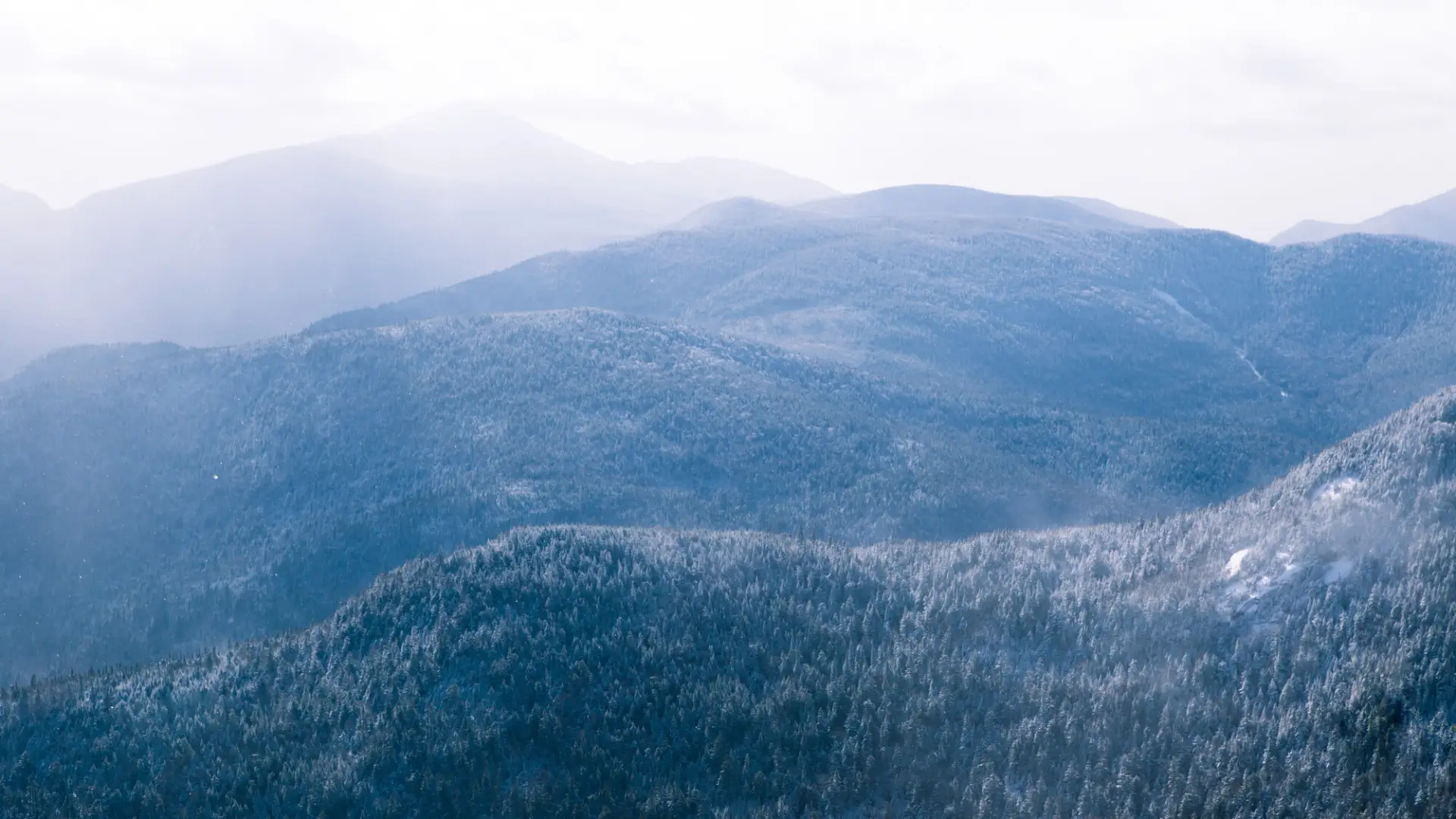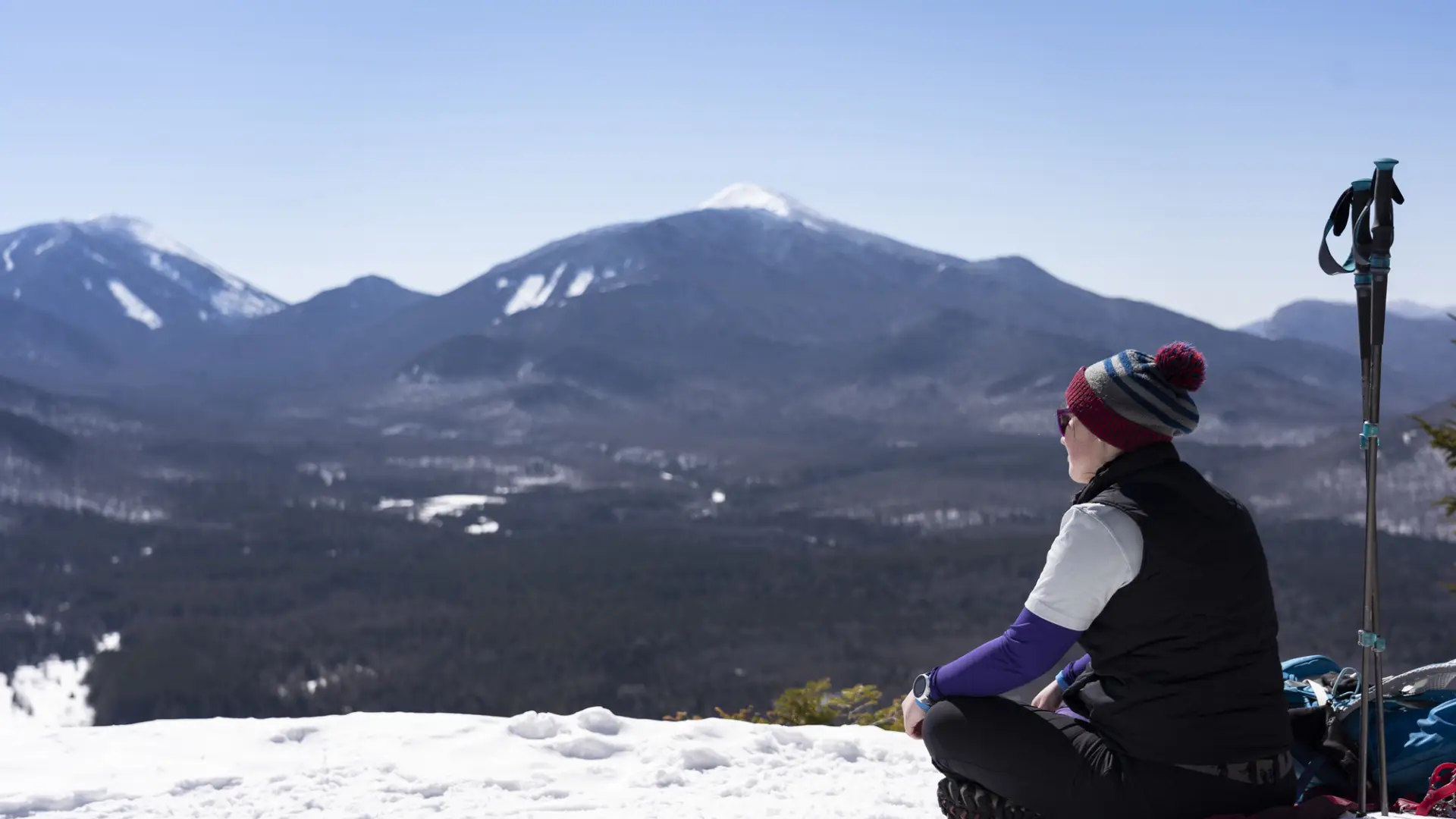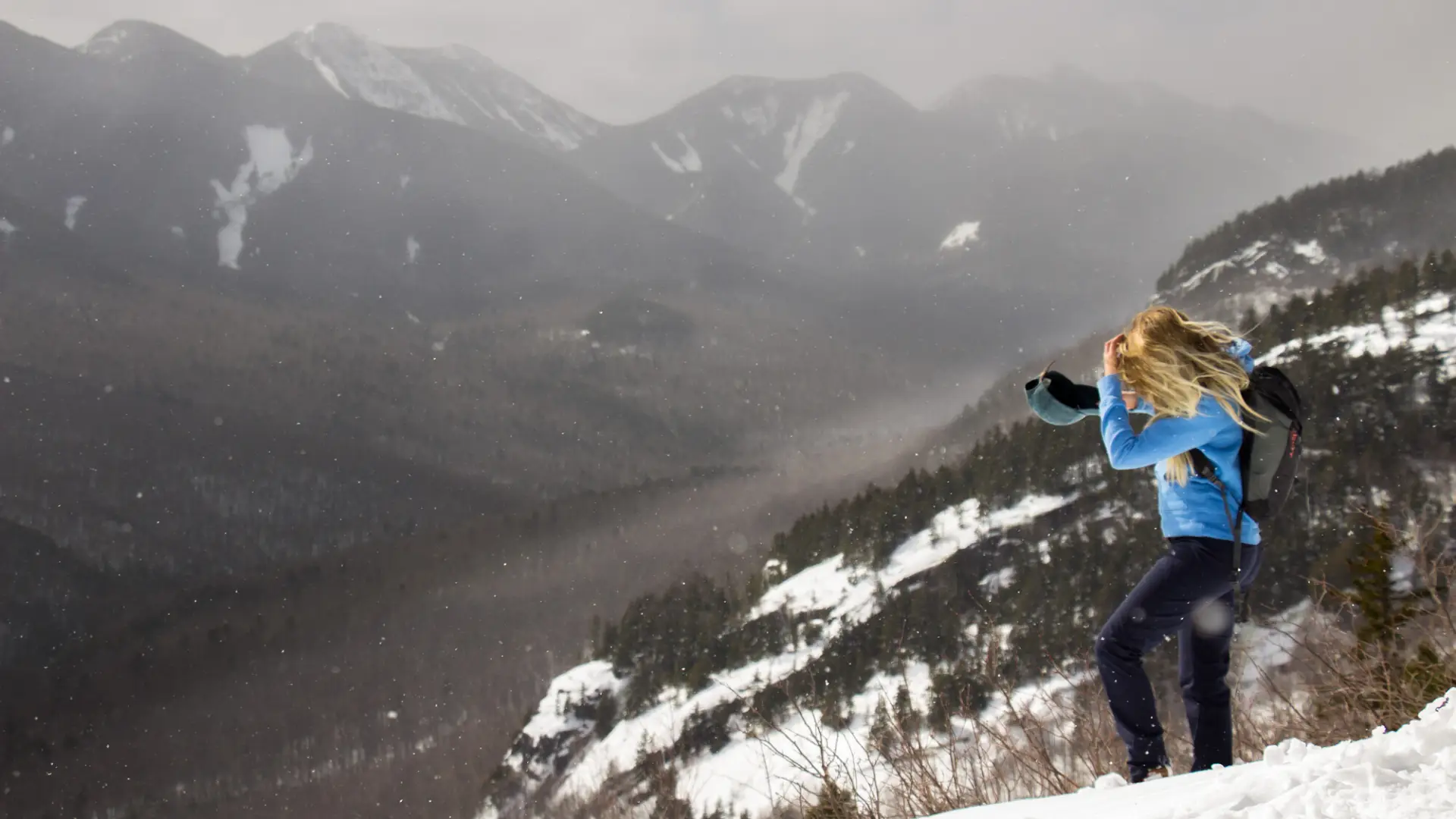Seven Winter Summit Hikes in the High Peaks that aren’t 46ers

Hikes to High Peak mountains that aren't above 4,000 feet!
It’s winter in the Adirondack High Peaks! While thoughts of crystallized spruce trees high up the mountains, bluebird views from above 4,000 feet, and big mileage days might be tempting, it’s safe (and fun!) to remember that there are other mountains in the High Peaks Wilderness Area that aren’t 46ers. Some are short and have brand new trails up them, while others still pack a punch, like the High Peaks, but with a bit less elevation gain and distance to hike. So, if you have a bit of experience in winter hiking and want to try your hand at some winter summit hikes, or you’re a seasoned winter 46er who just wants to find new views within the area you’ve spent so much time in, you should look into snowshoeing any of these seven High Peaks Wilderness Area summits below 4,000 feet!
1. Mt. Van Hoevenberg - Lake Placid
The Mt. Van Hoevenberg East Trail, accessed from the Olympic Sports Complex, is a 3.6-mile round-trip hike with an elevation gain of 1,000 feet. Opened in October 2018, this trail exemplifies sustainable design, featuring gentle switchbacks that keep the grade below 12%, making it accessible for various skill levels. In winter, the trail remains open, but hikers should be well-prepared for seasonal conditions. Some areas are known to have ice most of the time, and microspikes are a necessity. And just because this hike starts from a highly trafficked area doesn’t mean you shouldn’t come prepared for adverse conditions. The top of Mt. Van Hoevenberg rewards you with ledges that give a 180-degree view of the High Peaks. The MacIntyre Range, Colden, and North/South Meadows down below are particularly prominent.
The trailhead is located near the old bobsled run; from the parking lot, proceed through the gate and look left for a blue ORDA sign directing you toward the trailhead and register. Amenities at the complex include ample parking, restrooms, a café, and EV charging stations. While you’re here, you could even cross indoor climbing off your winter bucket list.

2. Rooster Comb - Keene Valley
Swinging further east, we end up in Keene Valley, an epicenter of winter hiking in the High Peaks. Rooster Comb Mountain is a 5-mile round-trip hike with an elevation gain of 1,770 feet. The trail begins with a wooden bridge leading to a pond behind Keene Central School, followed by a steady ascent through forested terrain, which, after a light snowfall, is a stunning section of the trail. At 2 miles, hikers encounter a junction; turning right leads to the summit, reached at 2.5 miles. Views from the summit ledge and Valley View Ledge before the summit combine for a 360-degree panorama that ranges from Mt. Marcy and the Johns Brook Valley to Giant Mountain and the Ausable Valley.
In winter, Rooster Comb is suitable for beginner winter hikers with some experience and good fitness. It's essential to bring extra layers for higher elevations and be prepared to turn back if weather conditions deteriorate, especially since this summit is mostly open.
3. Snow Mountain - Keene Valley
If you’re up to the challenge, Snow Mountain can be added to a trip up Rooster Comb! But don’t worry; this little peak, perched perfectly above Keene Valley, is a great trip on its own. We suggest saving it for its own trip since hiking it via Deer Brook Falls (further south from the previous start for Rooster Comb) is an interesting hike with lots of landscape variety.
The Deer Brook Trail begins from Route 73. The trail starts with rocky terrain alongside Deer Brook, leading to a private road where hikers can choose between two paths:
- Brook Route: This route continues along the brook, involving four crossings and navigating through a picturesque flume with rough footing.
- High Water Route: Follows private driveways, offering an alternative during high water conditions.
After a rerouted section due to past flooding, the trail ascends to rejoin the High Water Route on an old road. A two-log bridge over Deer Brook leads to a 200-yard spur trail to the base of Deer Brook Falls. This side trail can be particularly icy in the winter (traction devices are a must). Beyond the bridge, the trail continues toward Snow Mountain, culminating in a semi-open, flat-topped summit with panoramic views that are achieved with a bit of a steep calf-burning. The round-trip distance via this route is approximately 3 miles, with an elevation gain of 1,300 feet.

4. The Brothers - Keene Valley
The Three Brothers are often overlooked because they are considered “on the way” peaks, reached as you hike to Big Slide, an Adirondack 46er. But these three rocky bumps are destinations themselves, and you shouldn’t feel pressured to go all the way to Big Slide.
Hiking all three Brothers is a 6.4-mile round-trip hike with approximately 1,850 feet of elevation gain, starting from the Garden Trailhead in Keene Valley. Parking does still fill up here in the winter, so getting an early start is recommended. The trail climbs steadily through wooded switchbacks to the first Brother, with a few incredible views along the way. Towards the tops of both the First and Second Brother, the terrain can be steep and icy. Take care here, and be sure to switch from snowshoes to microspikes if need be. Both of the first two Brothers are open summits, so bundle up as you take in panoramic views of New York state’s highest mountains. The view from the Third Brother is a bit less spectacular than the prior two, but it does provide a nice frame of Big Slide and its sweeping snowy ridgeline in the distance.

5. Blueberry Mountain - Keene Valley
Blueberry Mountain might not have any blueberries this time of year, but its steep ascent still culminates in commanding views across Keene Valley and even to the north towards Whiteface Mountain. Aside from the views, a massive boulder is also perched at the summit, marking the mid-point of your hike!
Round trip, the Blueberry Mountain trail is 4 miles with about 1,550 feet of elevation gain, starting from the trailhead at Marcy Field. This is a steep hike, and while in the winter there are no dangerous obstacles, the grade of this hike is calf-burning, and you should only attempt if you have quite a bit of winter hiking experience.

6. Ampersand - Saranac Lake
Most people might not know this, but Ampersand Mountain, a member of the Saranac Lake 6ers, sits in a northerly portion of the High Peaks Wilderness Area! A bit farther away from the aforementioned hikes, this open summit gives you views of some of the more remote portions of the High Peaks, like the Seward Range and the Sawtooth Mountains. The 5.4-mile round trip hike, with 1,7800 feet of elevation gain, does have some challenging, steep areas in the winter that will require experience and the proper traction devices. If you’re up for the challenge, experiencing Ampersand in the winter, with its 360-degree views at the summit and massive glacial erratics near the top, is a must for chilly-season hiking fans.

7. Mount Adams - Newcomb
Way down in the southern portion of the High Peaks Wilderness Area sits Mount Adams, and with 1,900 feet of elevation gain in just under 5 miles round-trip, this winter summit packs a punch. Once you’ve crossed the steel suspension bridge spanning the icy Hudson River, a tough adventure begins as you continue to hike up steeper and steeper terrain to the frozen fire tower atop this treed-in mountain, which is just a few hundred feet shy of being an Adirondack 46er.
While many winter adventurers do make it out to this peak in the winter, you’ll want to be prepared for all winter conditions on this hike by bringing your snowshoes and microspikes, along with all other winter hiking essentials. It’s a serious and rewarding hike, and if you’re an experienced winter hiker, then it’s the perfect mountain for preparing you for some of the steepness one might see on a higher summit. Mount Adams also has the distinction of being the only mountain in the High Peaks Wilderness Area to have a fire tower still on its summit.

Do any of these winter summit hikes in the High Peaks interest you? If so, make sure you’ve done all your research and are prepared for the chilly winter conditions in the Adirondacks. Winter recreation in the High Peak Wilderness Area doesn’t have to mean getting up above 4,000 feet. These summits, while not meeting the 46er requirements, do offer their own unique challenges and can be a great way to get into the mountains during the winter. Staying in the area can help for doing a few of these during a weekend, and if you’re new to winter hiking, consider hiring a local Adirondack guide!